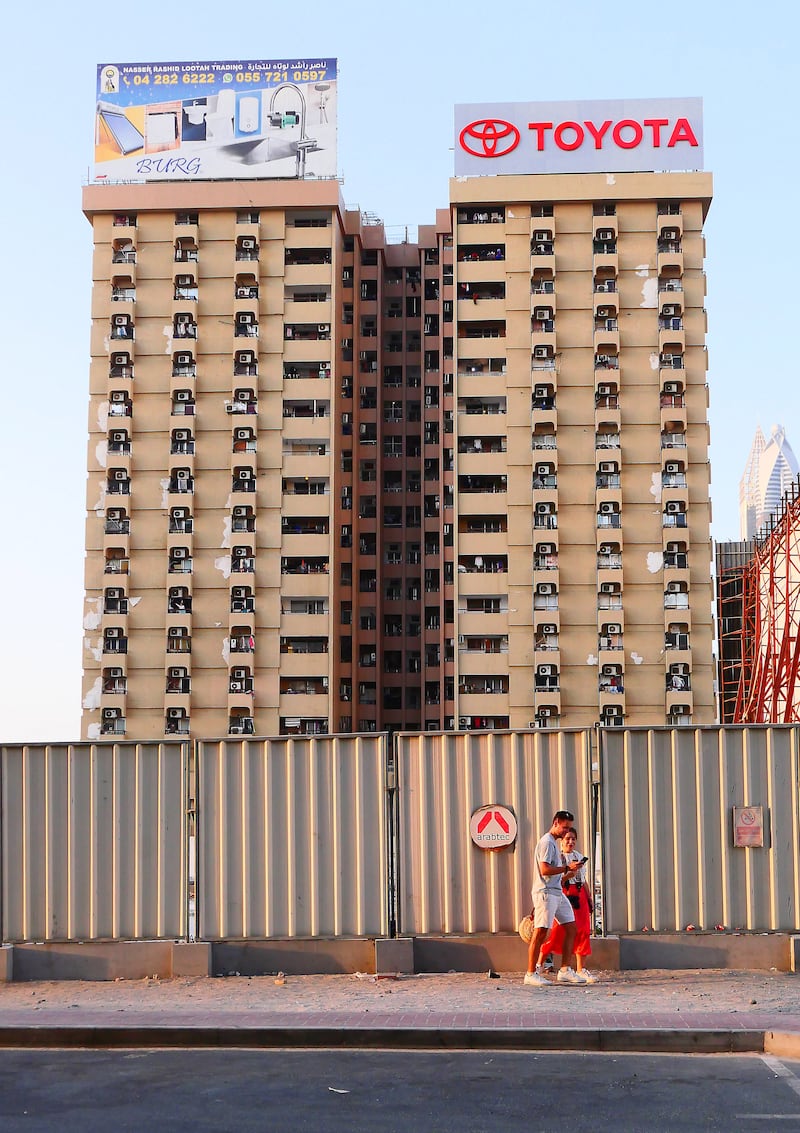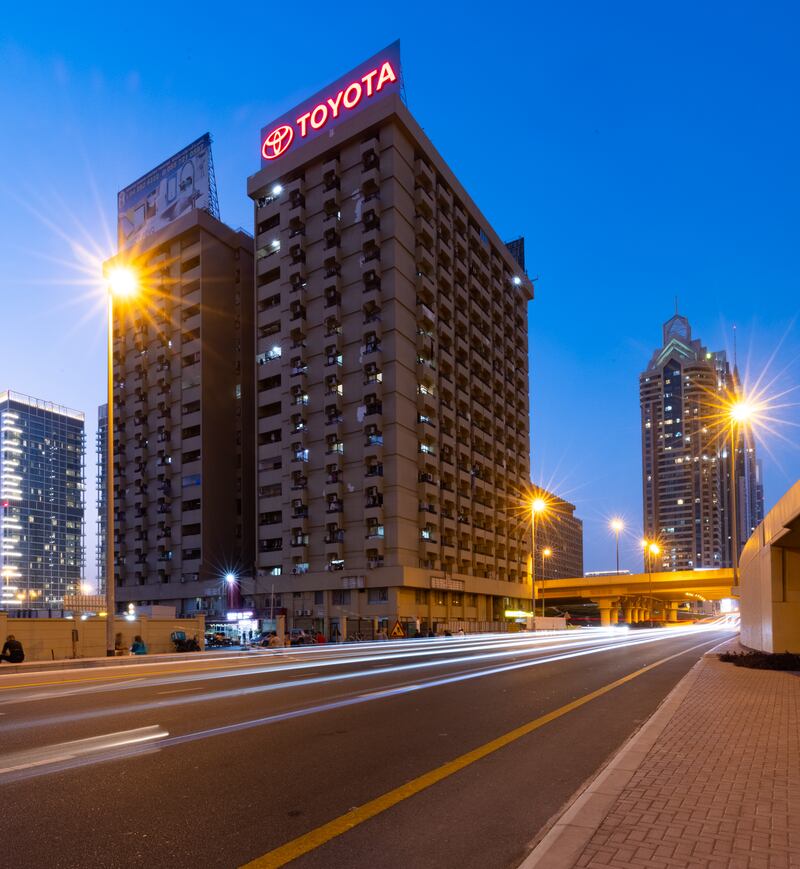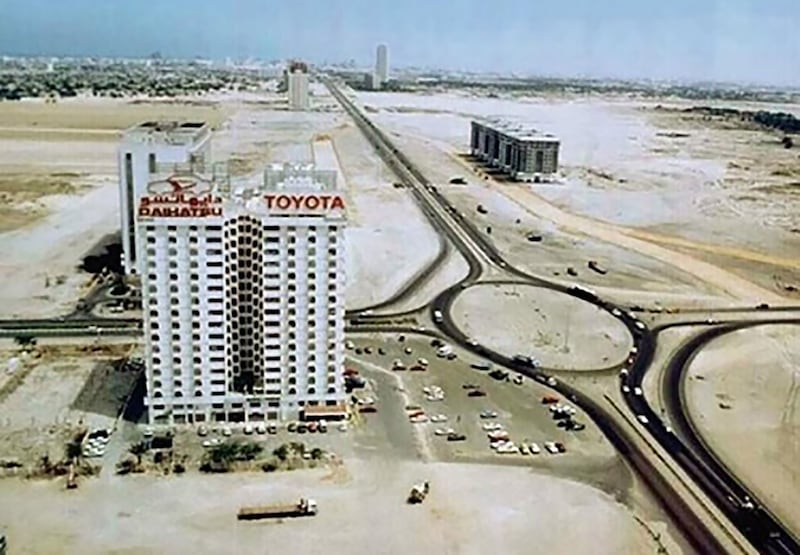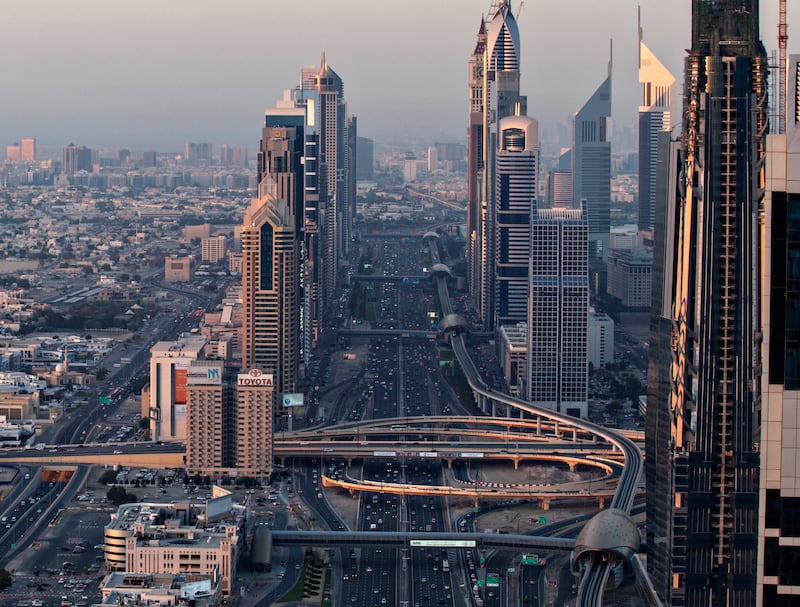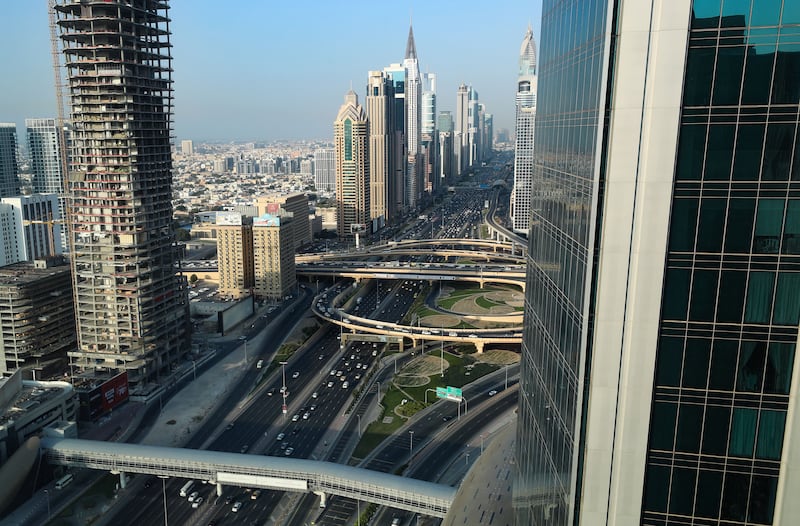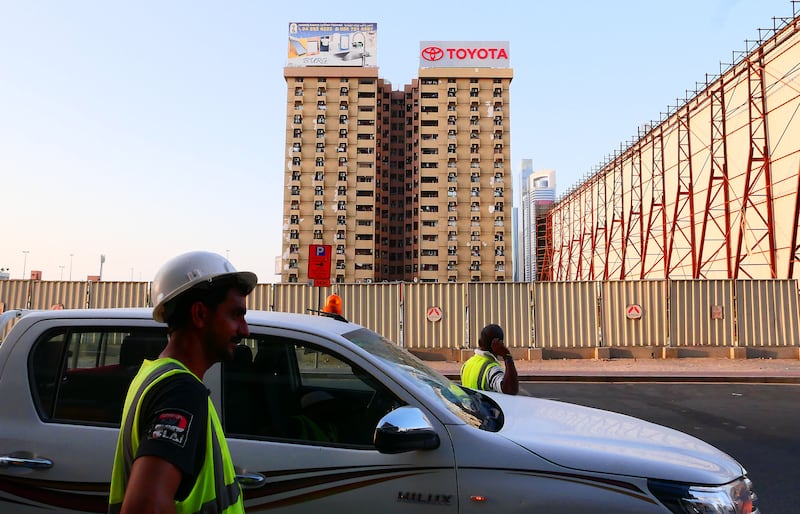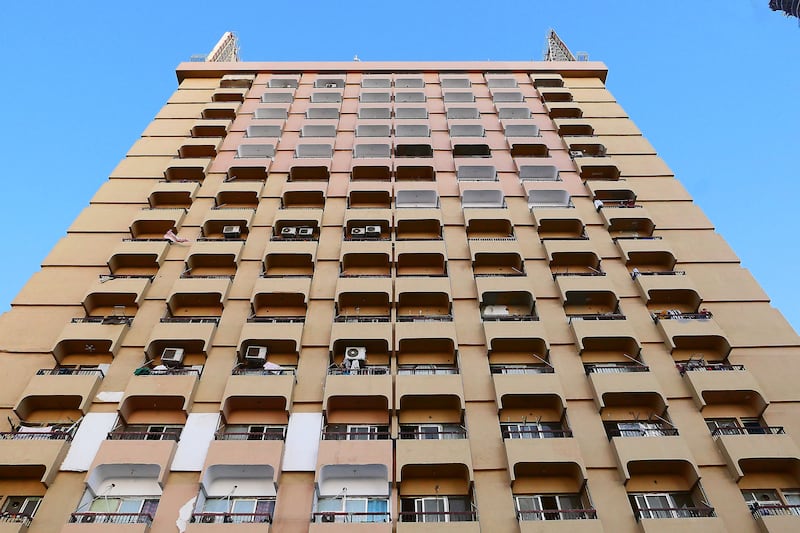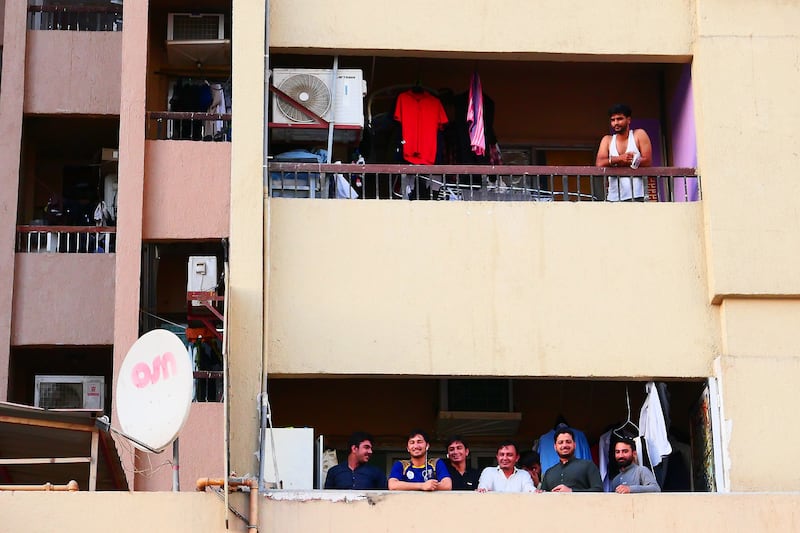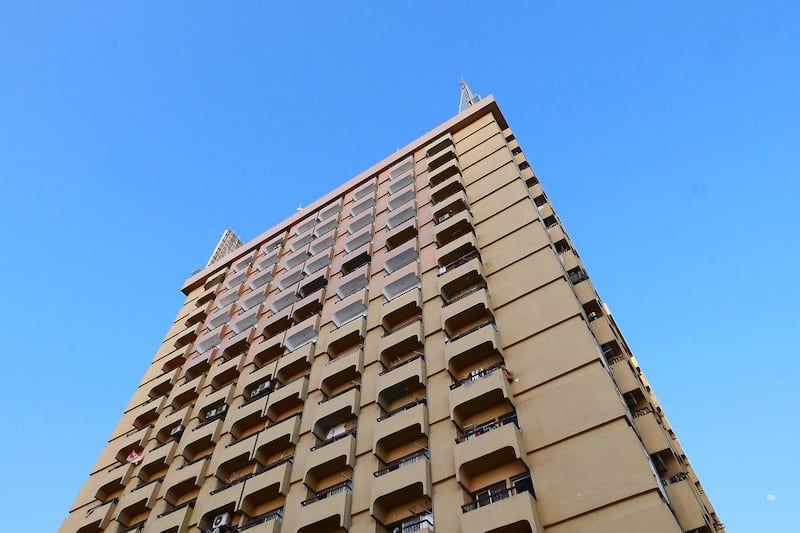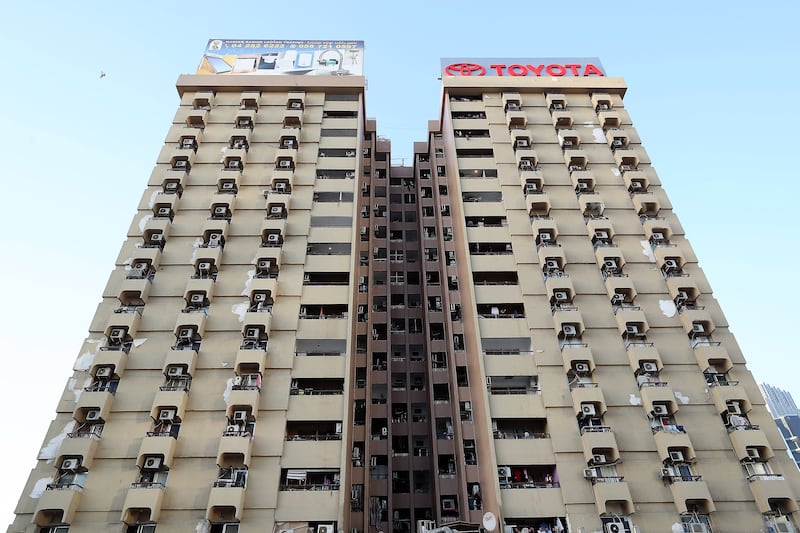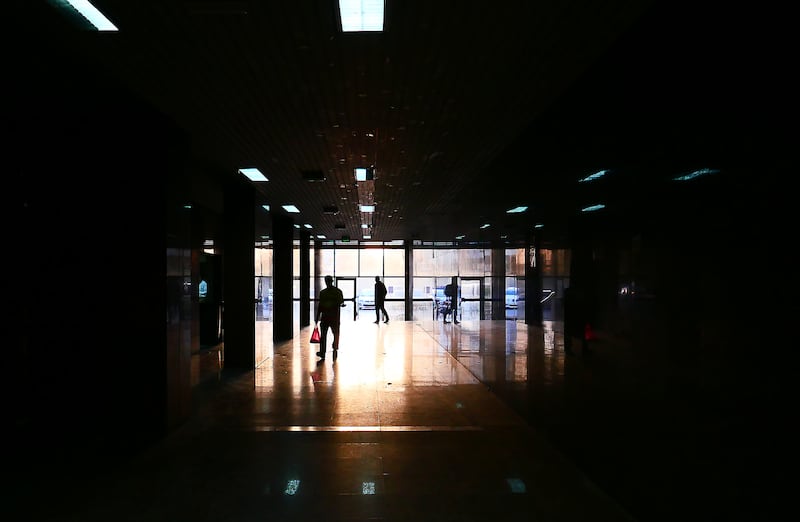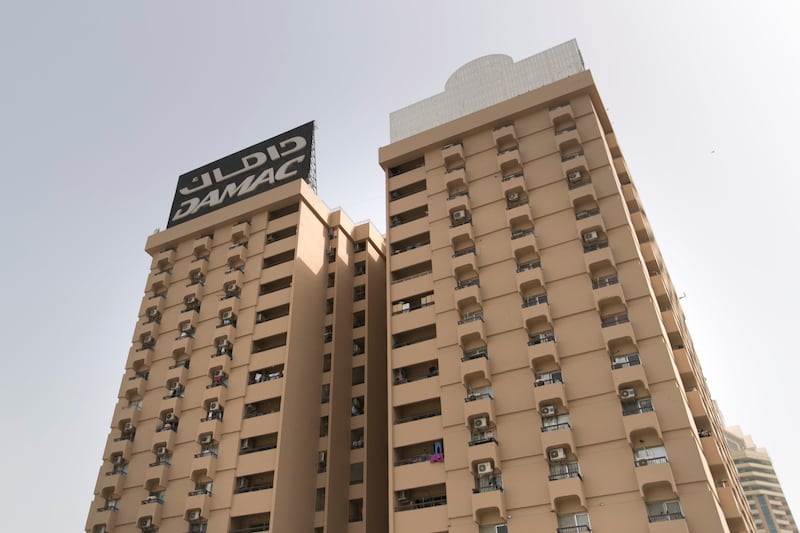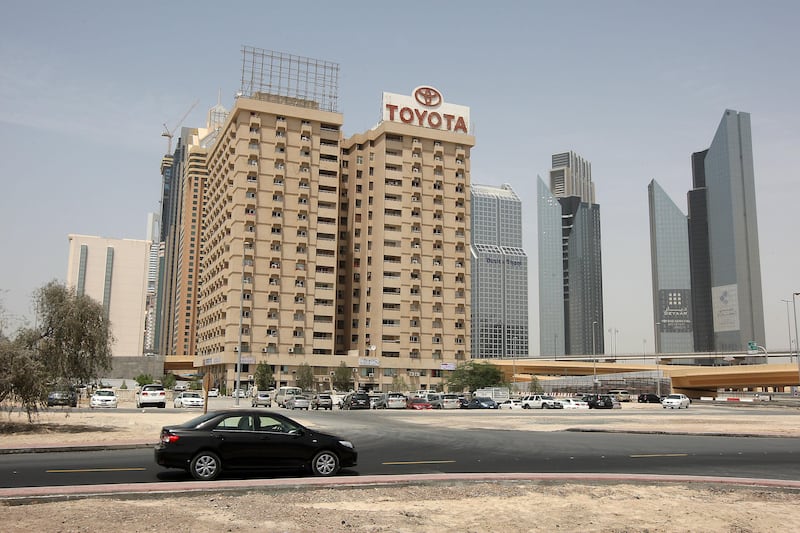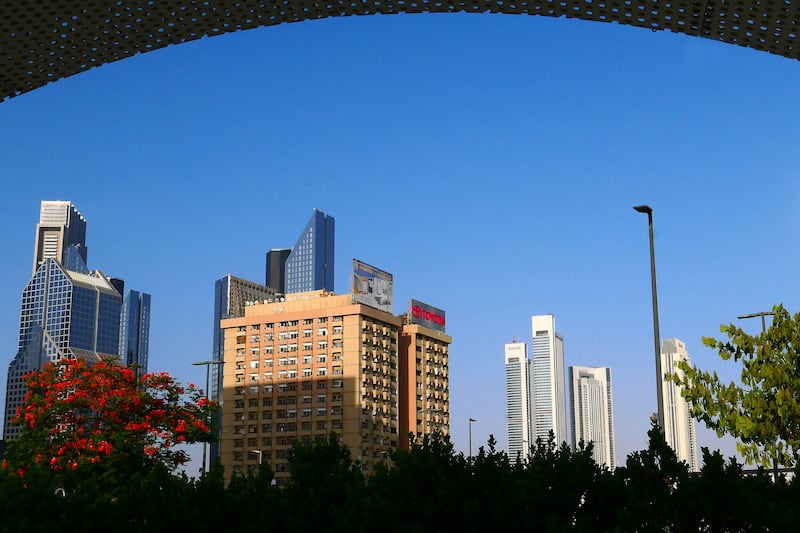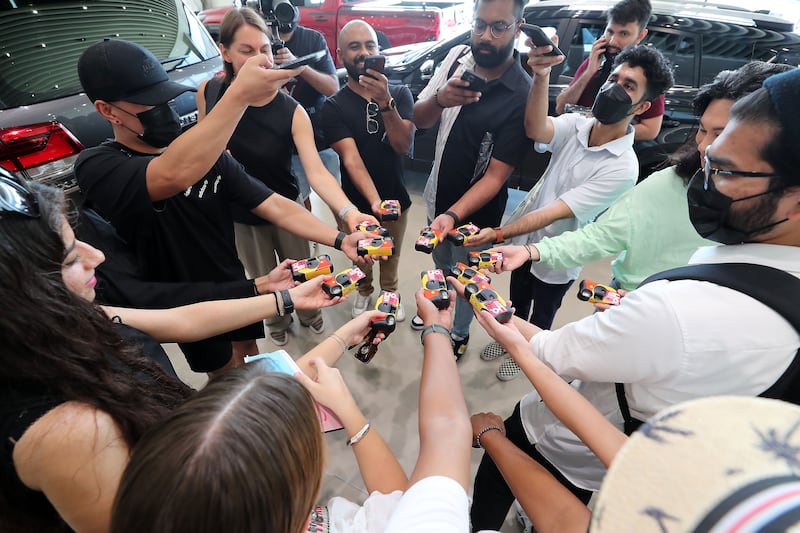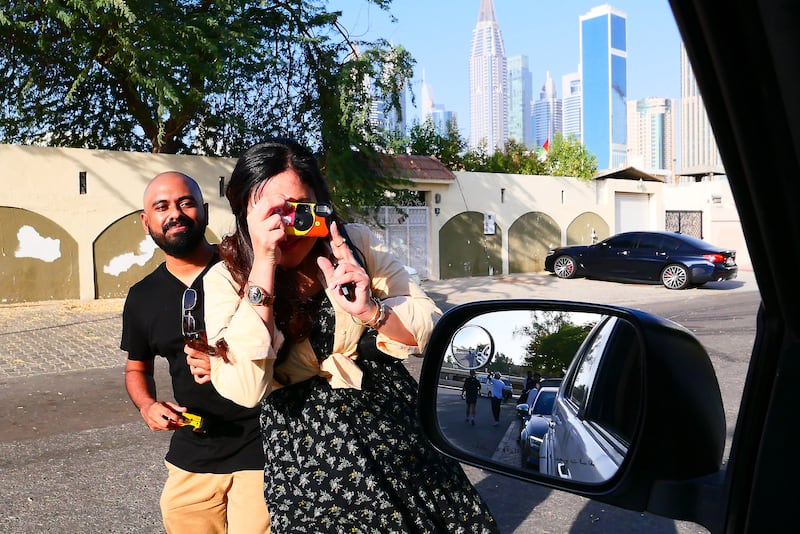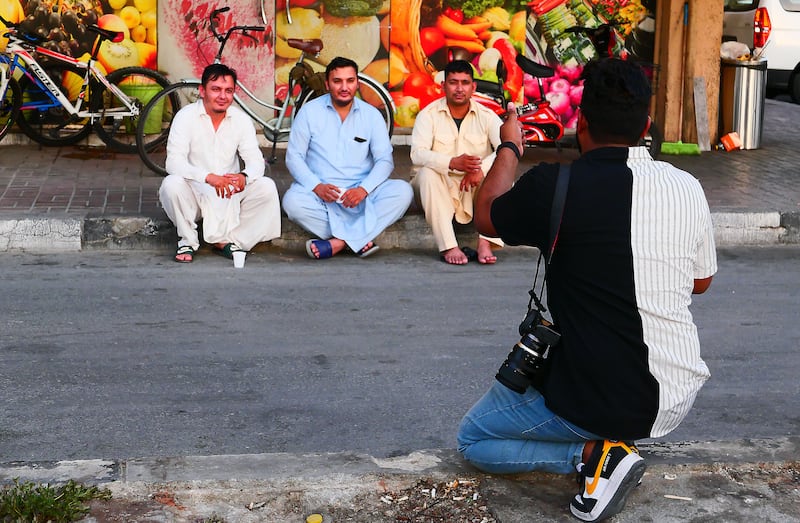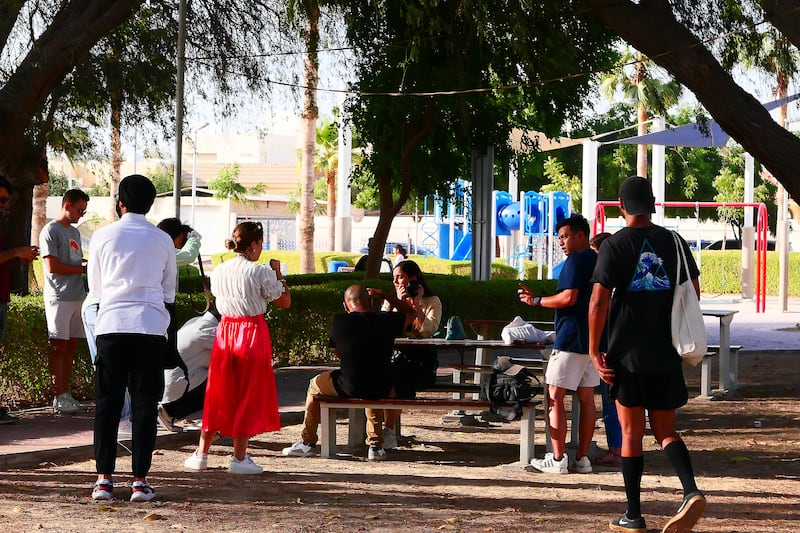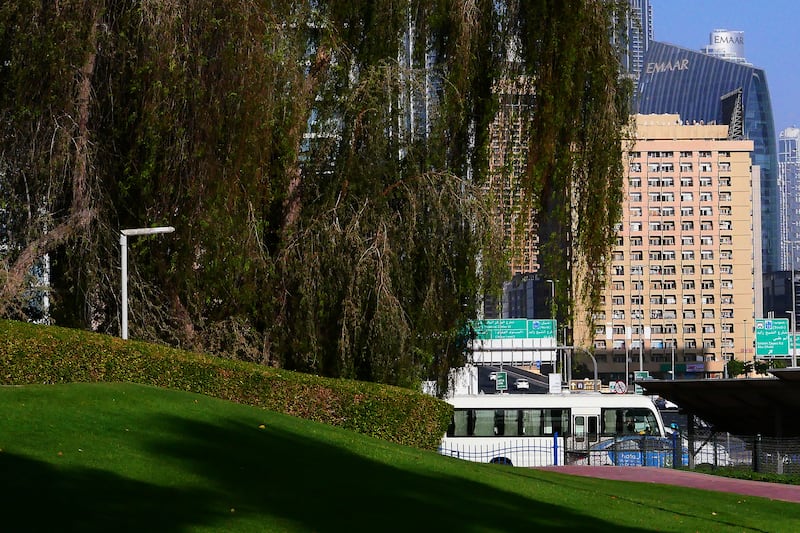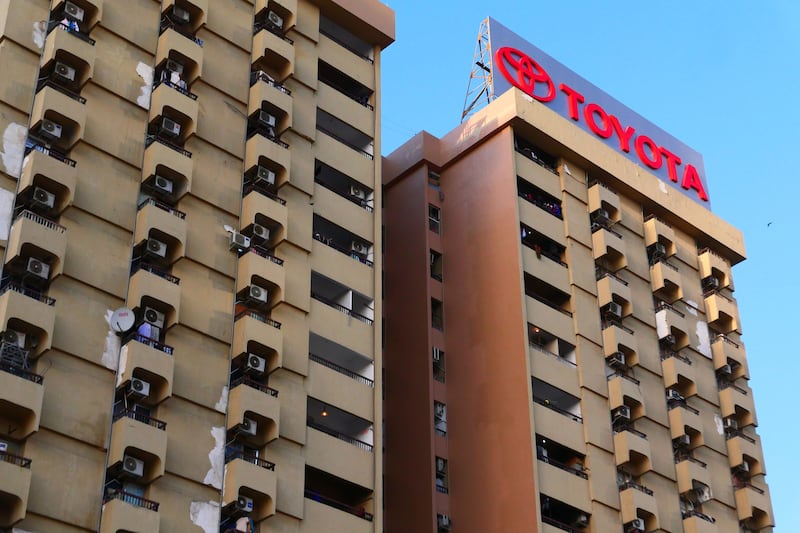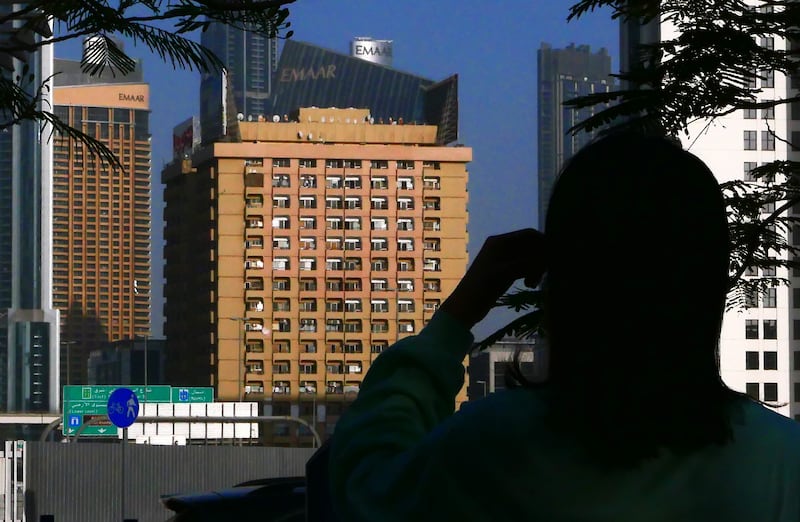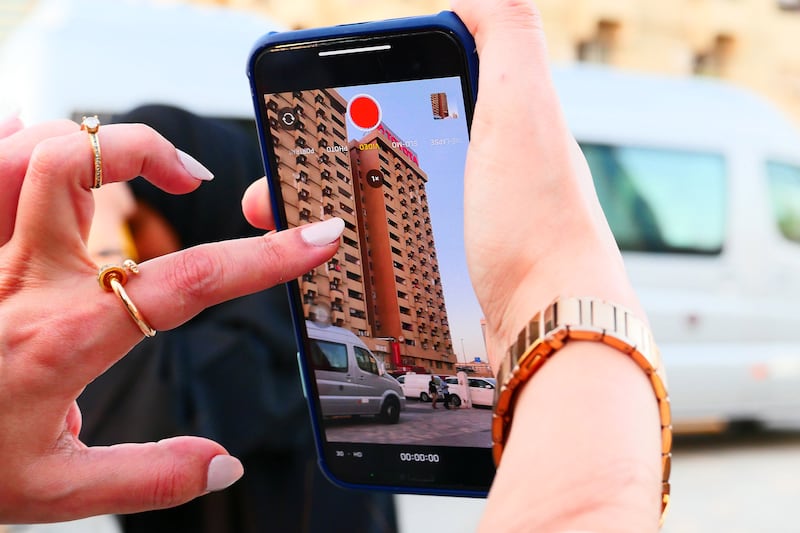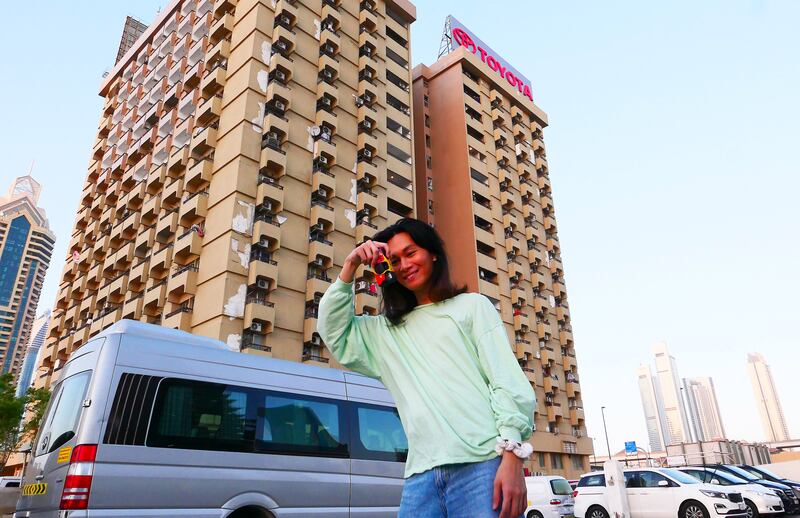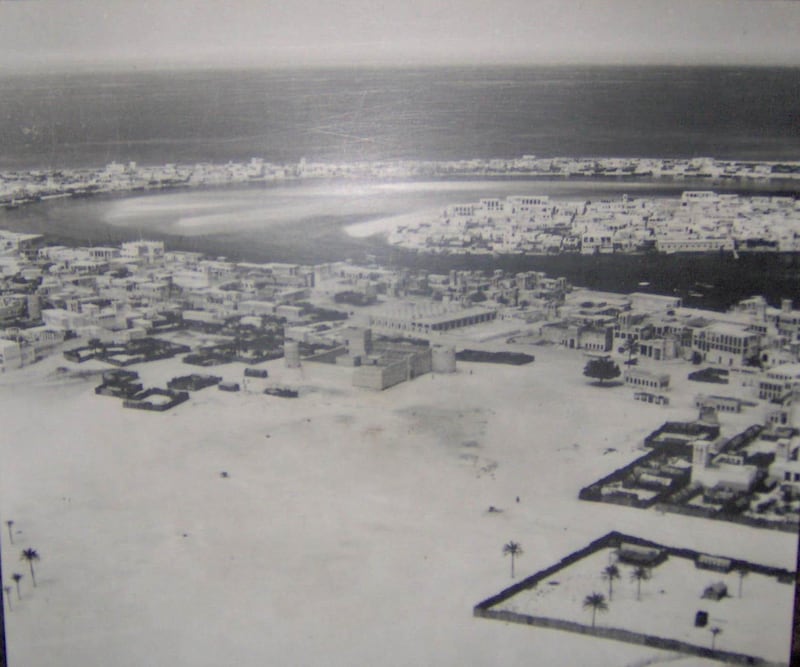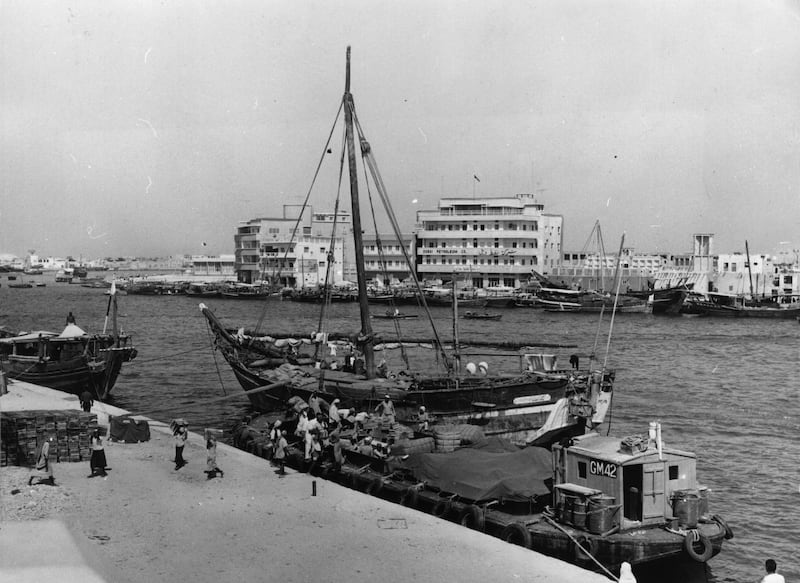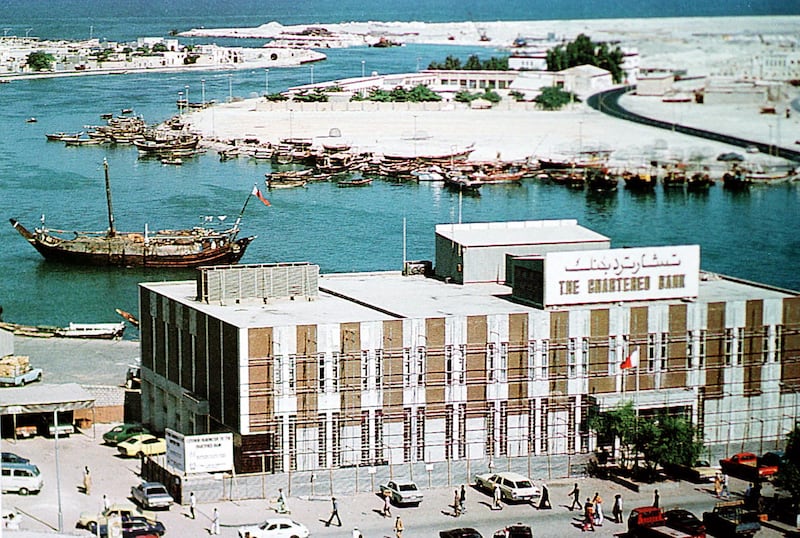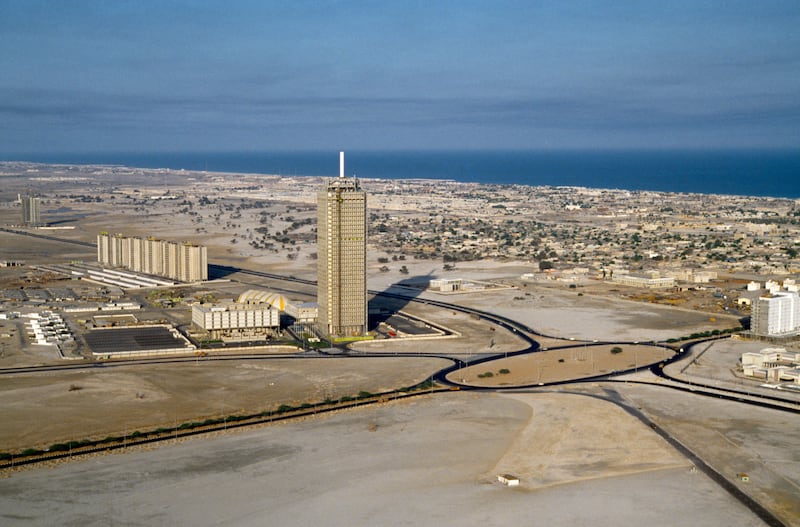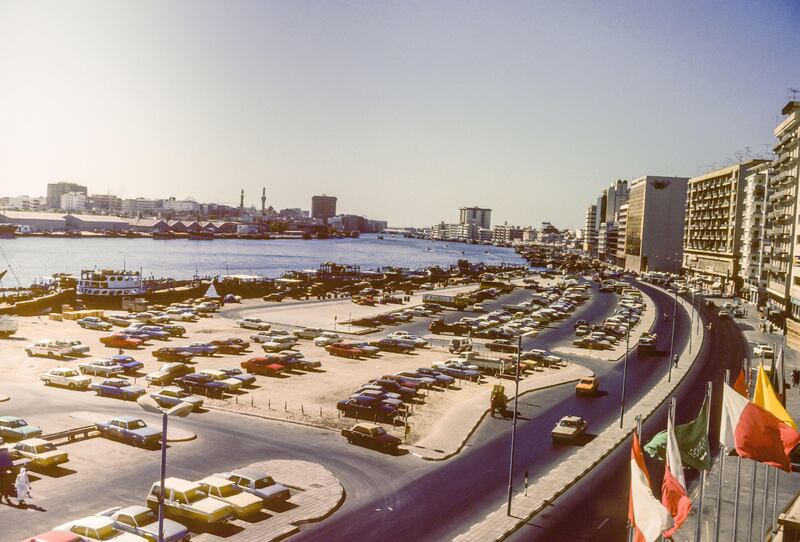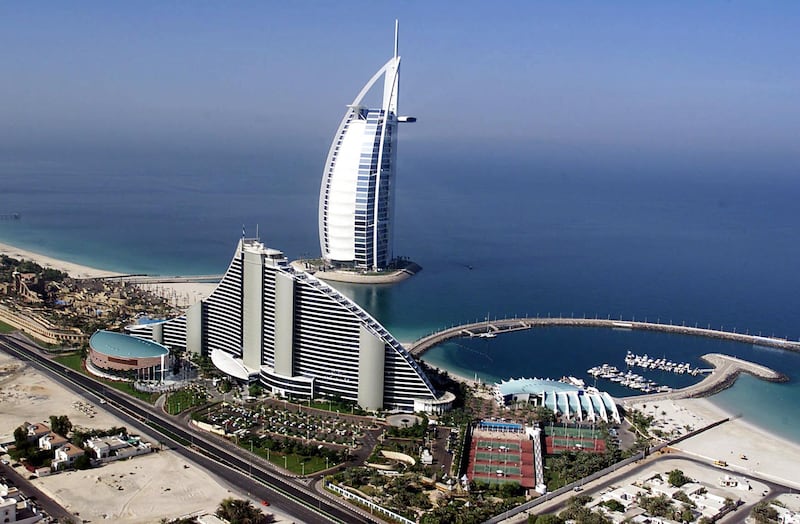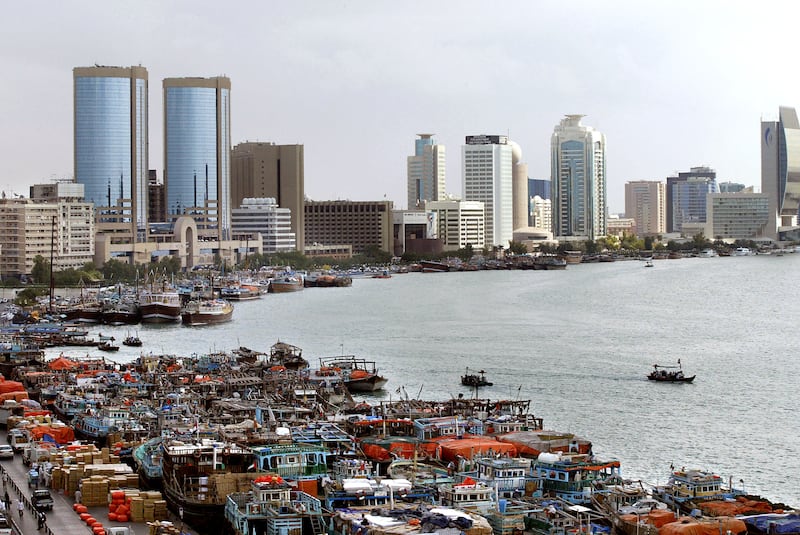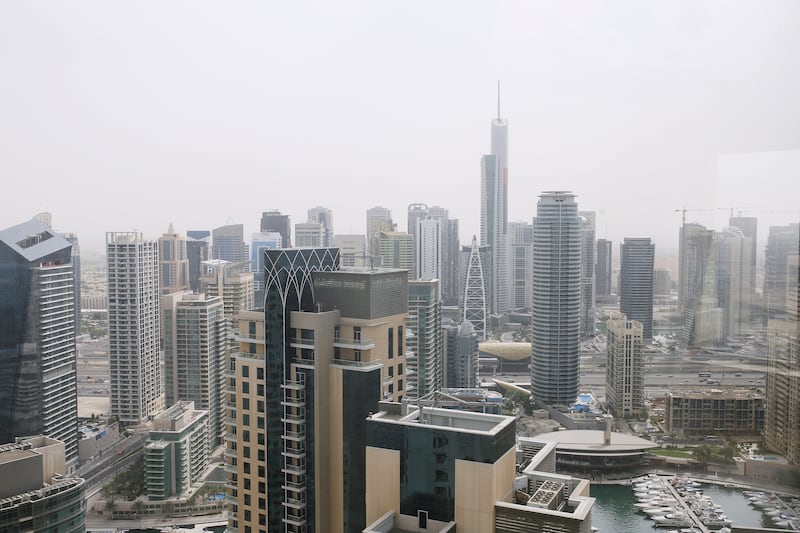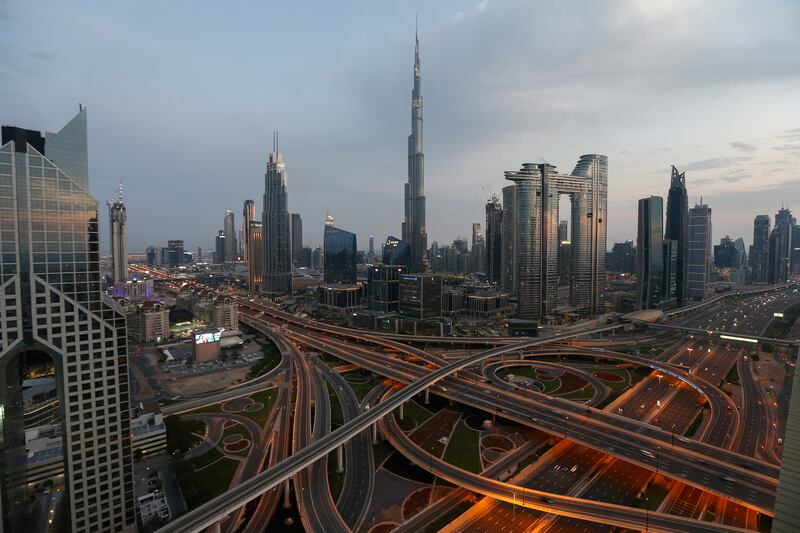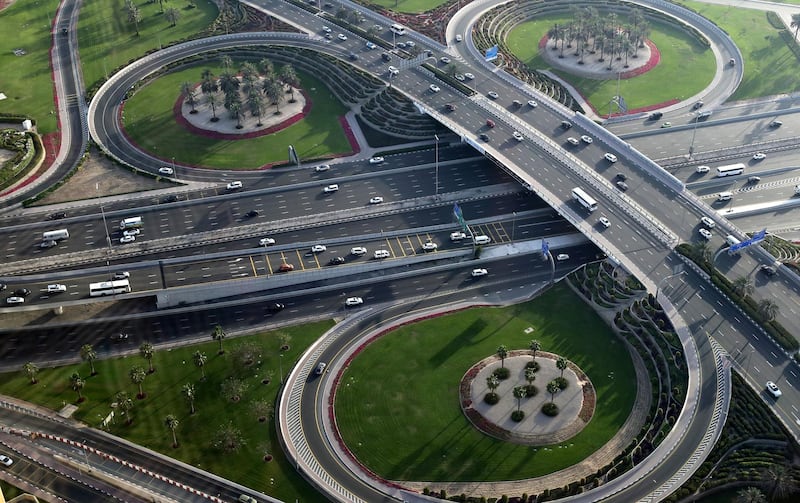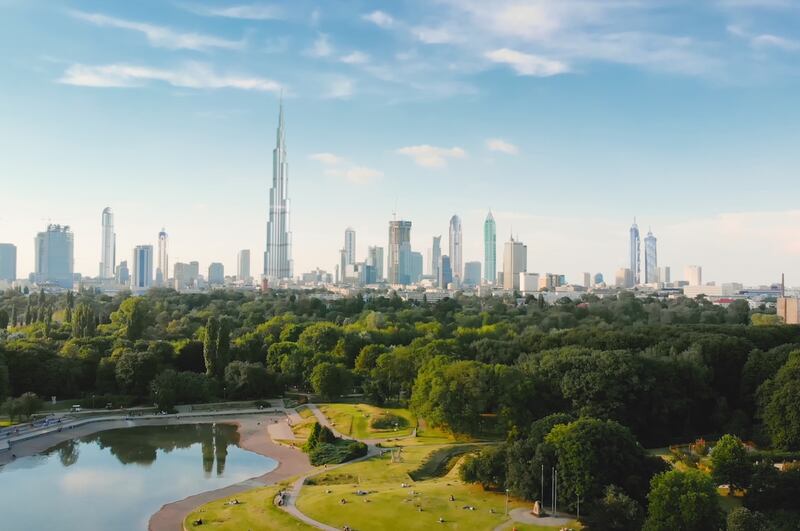In an era before Burj Khalifa, there were two landmarks to tell you you had arrived in Dubai. One was the World Trade Centre and the other was the Toyota Building.
Named so because of its neon sign, the Toyota Building served as a reference point as the city expanded. In 2018, the sign disappeared.
The two-block residential tower is properly known as the Nasser Rashid Lootah Building and its owners, the NRL Group, told The National that the advertising contract with Toyota was renewed recently.
“The contract ended several years ago but it has started again,” the group said.
The English sign was restored to the side of the building that greets drivers heading north towards Sharjah, while an Arabic sign has been installed on the opposite side.
Al Futtaim Toyota also said on Monday the sign was back “by popular demand” following a survey.
“There is a lot of nostalgia and fond memories that Dubai residents associate with the billboard,” said Vincent Wijnen, senior managing director at Al Futtaim Automotive. “Bringing it back is our tribute to the spirit of Dubai.”
The significance of the Lootah tower, however, goes far beyond a simple sign, and, like all old buildings in Dubai, it has a story to tell.
It appeared on the city’s skyline at some point in the late 1970s. Archive photographs taken by Gulf News photographers from the World Trade Centre in 1979 show it close to completion.
It was one of the few high-rises in Dubai then, surrounded by nothing but sand, beside what was known as Defence Roundabout. All Futtaim Toyota said the sign was installed in the 1980s but neon was not new in Dubai.
“Neon signage had … already lit up the night sky for nearly two decades from on top of buildings along Dubai Creek,” said Todd Reisz, author of Showpiece City: How Architecture Made Dubai.
Rather than the sign, Mr Reisz said the building’s significance lies more in representing a new phase in Dubai’s expansion.
“The Toyota signage and the building below it were part of a ramped-up campaign to stretch the city beyond the Creek, towards the city’s developing new ports,” said Mr Reisz, referring to Port Rashid, Dubai Drydocks and Jebel Ali Port.
“Probably completed in the late 1970s or early 1980s just after the World Trade Centre, the Lootah building helped to configure the Abu Dhabi road, not yet known as Sheikh Zayed Road, as the city’s spine.”
The building reflects its era. Its concrete, shaded balconies and smaller windows offered residents respite from the searing heat.
Over the years, however, the tower has been overshadowed by modern skyscrapers, including the world's tallest building, Burj Khalifa.
Its once white exterior has been painted brown but older external air conditioning units still dot the exterior. On the ground floor are some small shops including a grocery, laundry and restaurant. A rudimentary street gym has closed, with locks on the door and faded posters of musclemen yellowing on the walls.
That the building remains is a statement in itself and many residents still call it home. The NRL Group said it plans a maintenance programme soon.
Yasser Elsheshtawy, adjunct professor of architecture at Columbia University in the US and expert on urbanism in the Gulf, cautioned against getting too nostalgic about such buildings as there are times when people need to step back and look at what the city needs.
“It is natural to think fondly of some of these buildings and associate some romantic idea of the ‘good old times’ and sense of community,” he said. “But this could be wishful thinking and not truly what existed at the time.
“The danger is that nostalgia is attached to these buildings. I personally don’t think much would be lost if it were to be demolished. People who live there need to be relocated and given appropriate housing. It could be a park and provide an open air space for people in that area.”
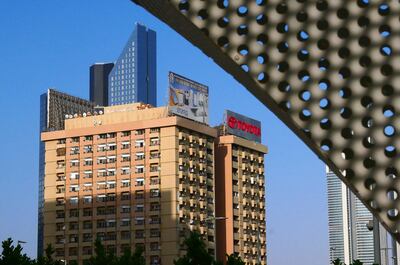
The privately-owned tower and wider neighbourhood have been the subject of a recent photographic tour run by Dubai’s Gulf Photo Plus that examined the area’s history and urban development.
“Toyota have done a great service to the participants and residents by highlighting this local icon,” said Gulf Photo Plus’s Raz Hansrod.
“And [by] using the opportunity of the sign reinstatement to share cultural insights with participants and the wider community,” said Mr Hansrod, who said Toyota had contacted them about a tour and they worked together to place the building in a historic context.
This tour also reflects the surge of interest in the UAE’s architectural heritage over the past few years, including Mr Reisz’s and Prof Elsheshtawy's work.
Sultan Sooud Al Qassemi and Mr Reisz also co-edited Building Sharjah, a book which documented modernist architecture in the emirate. Sharjah Art Foundation has restored buildings such as the Flying Saucer, while the Sharjah Architecture Triennial holds walking tours of historic neighbourhoods.
In Abu Dhabi, a modern heritage initiative aims to safeguard its historic architecture, while in 2018 Dubai Municipality launched one of its own.
But questions will always swirl about redevelopment when it comes to these buildings.
“There have been multiple rumours about pending demolition,” Mr Reisz said.
“That’s not surprising considering that it is clearly of another era and now in the midst of a new district targeting an income level beyond that of current residents. The building once announced Dubai’s economic advancement. Today, it survives as a hope for a more demographically integrated Dubai.”
